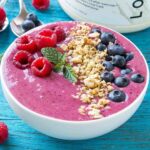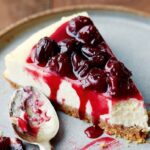Indulge your senses in the decadent world of nut-free truffles! This comprehensive guide unveils the secrets to crafting exquisitely smooth, intensely flavorful truffles, perfect for those with nut allergies or simply seeking delightful alternatives. We’ll journey through ingredient selection, mastering the perfect truffle base, exploring exciting flavor variations, and finally, achieving that flawless finish. Prepare to be amazed by how easy it is to create these luxurious treats.
From creamy vegan butter substitutes to exciting flavor infusions, we’ll navigate each step with detailed instructions and helpful tips, ensuring a successful and enjoyable truffle-making experience. Whether you’re a seasoned baker or a kitchen novice, this guide provides the confidence and knowledge to create unforgettable nut-free truffles that will impress even the most discerning palates.
Ingredient Selection and Preparation
Creating exquisite nut-free truffles hinges on selecting high-quality ingredients and preparing them with meticulous care. The right combination of sweetness, richness, and flavor will elevate your truffles from good to unforgettable. This section details the ingredient choices and preparation techniques crucial for achieving perfectly textured and intensely flavorful truffles.
Sweeteners
The choice of sweetener significantly impacts the truffle’s final sweetness and texture. A balance is key; overly sweet truffles can be cloying, while insufficient sweetness leaves them bland.
- Powdered Sugar: Provides a fine, smooth texture and blends easily into the truffle mixture. Its delicate sweetness complements many flavor profiles.
- Maple Syrup: Offers a rich, complex sweetness with subtle caramel notes. Its viscosity adds moisture and helps bind the truffle mixture. Use a high-quality, pure maple syrup for the best results.
- Agave Nectar: A slightly less intense sweetness than maple syrup, agave offers a smoother texture and a subtle floral note. It contributes moisture and helps create a cohesive truffle base.
Fats
The fat component is crucial for the truffle’s creamy texture and melt-in-your-mouth quality. Different fats offer varying degrees of richness and mouthfeel.
- Coconut Oil: Provides a creamy texture and a subtle coconut flavor that works well in certain flavor combinations. Use refined coconut oil to avoid a strong coconut taste.
- Cocoa Butter: A classic choice for truffles, cocoa butter lends a smooth, luxurious texture and a delicate chocolate flavor. It melts beautifully in the mouth.
Flavorings
Flavorings add depth and complexity to your nut-free truffles. Experiment with different combinations to discover your signature truffle flavor.
- Vanilla Extract: A classic choice, vanilla extract adds a warm, comforting sweetness and enhances the overall flavor profile.
- Espresso Powder: Infuses the truffles with a rich, intense coffee flavor. Use high-quality espresso powder for the best results.
- Dried Fruit Purees (e.g., Apricot, Cranberry): Add moisture, sweetness, and vibrant fruit flavors. Ensure the puree is smooth and free of lumps.
- Spices (e.g., Cinnamon, Cardamom): A small amount of spice can elevate the flavor profile, adding warmth and complexity.
Nut-Free Butter Alternatives Comparison
Choosing the right nut-free butter is essential for achieving the desired texture and flavor in your truffles. The following table compares popular options:
| Butter Alternative | Taste | Texture | Suitability for Truffles |
|---|---|---|---|
| Sunflower Seed Butter | Mildly nutty, slightly sweet | Smooth, creamy | Excellent; provides a good base and blends well with other flavors. |
| Tahini | Strong sesame flavor, slightly bitter | Thick, pasty | Suitable for specific flavor combinations (e.g., chocolate-sesame); requires careful blending to achieve a smooth texture. |
| Pumpkin Seed Butter | Mildly nutty, slightly earthy | Smooth, creamy | Good option; adds a unique flavor profile and blends well with spices. |
| Soybean Butter | Mildly beany flavor | Smooth, creamy | Can be used but may require additional flavoring to mask the beany taste. |
Truffle Base Creation

Creating the perfect truffle base is the heart of this recipe. The goal is a smooth, rich, and intensely flavorful mixture that will hold its shape beautifully once formed into truffles. This section will guide you through the process, offering different techniques to achieve that ideal creamy texture.
The process involves gently combining your prepared ingredients – the nut-free butter, cocoa powder, powdered sugar, and any additional flavorings – until a cohesive, pliable dough forms. The exact method depends on your preference and equipment.
Food Processor Method
Using a food processor offers speed and efficiency. Add the softened nut-free butter to the bowl and pulse until it’s broken down into small pieces. Gradually add the cocoa powder and powdered sugar, pulsing between additions to prevent clumping. The mixture should start to come together. If using a liquid flavoring like vanilla extract, add it towards the end and pulse just until combined. Avoid over-processing, as this can result in a greasy texture. The ideal consistency is that of a thick, smooth paste that holds its shape when pressed. If the mixture seems too dry, add a teaspoon of milk or other liquid at a time, pulsing until incorporated. If it’s too wet, add a tablespoon of powdered sugar until it reaches the desired consistency. The process should take only a few minutes. Imagine a rich, dark brown paste, almost like a very thick chocolate pudding, but without the grains.
Hand Mixing Method
For a more hands-on approach, combine the softened nut-free butter in a large bowl. Gradually whisk in the cocoa powder, ensuring there are no lumps. Then, sift in the powdered sugar to prevent lumps and ensure even distribution. This step requires a little more elbow grease, but it allows for more control over the texture. If using extracts or other flavorings, incorporate them thoroughly at this stage. If the mixture seems too dry, add a tiny amount of milk or other liquid, mixing until just combined. Conversely, if it’s too wet, gradually add powdered sugar until the desired consistency is achieved. The final result should be a smooth, pliable dough, similar in texture to modeling clay, but richer and darker in color. The process might take 5-10 minutes of diligent mixing, but the result is well worth the effort. Imagine the deep brown color intensifying as you incorporate the ingredients, the subtle aroma of cocoa and your chosen flavorings filling the air.
Troubleshooting Common Issues
A common problem is a truffle base that is too dry. This often results from using butter that isn’t soft enough or adding too much powdered sugar. The solution is to add a small amount of milk, cream, or even a little melted nut-free butter, mixing thoroughly until the mixture becomes pliable. Conversely, a truffle base that is too wet typically results from adding too much liquid or using butter that is excessively soft. In this case, adding more powdered sugar, a tablespoon at a time, is the solution. Remember to mix thoroughly after each addition until a smooth, workable consistency is reached. The goal is a base that holds its shape without being crumbly or overly sticky.
Creating delicious nut-free truffles is an adventure in culinary artistry, a journey from carefully selected ingredients to the final, satisfying bite. This guide has equipped you with the knowledge and techniques to craft your own unique truffle creations, opening up a world of flavor possibilities. Experiment with different flavor combinations, coatings, and shapes to personalize your truffles and share the joy of these delightful treats with friends and family. So go ahead, unleash your inner chocolatier and savor the sweet rewards of your homemade nut-free masterpieces!
Questions and Answers
Can I use different types of vegan butter?
Yes! The guide explores various options, highlighting their unique properties. Experiment to find your favorite.
How long do nut-free truffles last?
Properly stored in an airtight container in the refrigerator, your truffles should remain fresh for about a week.
Can I make these truffles ahead of time?
Absolutely! In fact, allowing them to set in the refrigerator enhances their texture and flavor.
What if my truffle base is too dry?
Add a teaspoon of plant-based milk or oil at a time until you reach the desired consistency.
What if my truffle base is too wet?
Add a tablespoon of cocoa powder or powdered sugar until it firms up.


